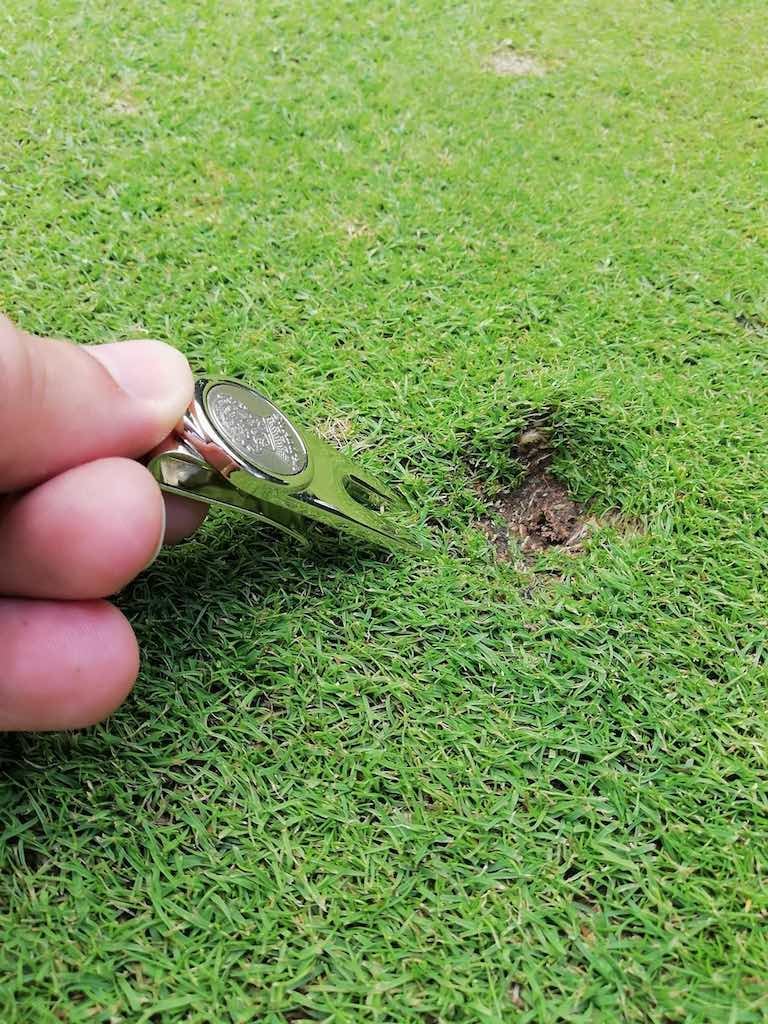
Fix Your Divots: A Beginner's Guide to Respecting the Golf Course

Golf is a sport steeped in tradition, etiquette, and respect—not just for fellow players, but for the course itself. One of the most fundamental responsibilities every golfer has is repairing divots, those chunks of turf displaced when your club strikes the ground during a shot. While it might seem like a minor detail to newcomers, proper divot repair is essential for maintaining course conditions and demonstrates your understanding of golf's core values.
What Exactly Is a Divot?
A divot is the piece of turf that gets lifted or displaced when your club makes contact with the ground during a swing. This typically happens on iron shots from the fairway or rough, where the proper technique involves hitting the ball first, then taking a shallow divot after impact. The remaining bare spot in the ground is called a divot mark or divot scar.
Understanding divots is crucial because they're actually a sign of good ball-striking technique. Professional golfers create divots on nearly every iron shot, and as you improve your swing, you'll likely start creating them too. The key is knowing how to properly repair them afterward.
Why Divot Repair Matters
Course maintenance crews work tirelessly to keep golf courses in pristine condition, but they can't be everywhere at once. When divots go unrepaired, they create several problems that affect everyone's enjoyment of the game.
Unrepaired divots leave bare patches that take weeks to heal naturally. During this time, they collect water, creating muddy spots that worsen playing conditions. These bare areas also become breeding grounds for weeds and can develop into permanent scars if left untreated. From a practical standpoint, your ball landing in someone else's unrepaired divot mark creates an unfair lie that can significantly impact your next shot.
Beyond the practical concerns, repairing divots is simply good etiquette. Golf operates on an honor system where players police themselves and take responsibility for their impact on the course. When you repair your divots, you're contributing to the collective effort to maintain the course for everyone's enjoyment.

The Two Types of Divot Repair
Understanding which repair method to use depends on the situation you encounter after your shot.
Replacing the Divot Piece: When your club lifts a substantial chunk of turf that remains largely intact, the best approach is to retrieve the piece and place it back in the divot mark. Press it down firmly with your foot, ensuring good contact with the soil below. This method works best when the divot piece is still in one piece and hasn't been shattered by the impact.
Using Sand and Seed Mix: Many golf courses provide sand and seed mixtures in containers mounted on golf carts or placed around tee boxes. This method is preferred when the divot piece is too damaged to replace effectively, or when the course specifically requests this approach. Simply fill the divot mark with the mixture, level it off, and give it a gentle pat with your club or foot.
Step-by-Step Divot Repair Process
The repair process should become as automatic as checking your yardage or reading the green. Immediately after taking your shot, look for any divot you may have created. If you find one, assess whether the turf piece is suitable for replacement or if you need to use sand and seed mixture.
For intact divot pieces, pick up the chunk of turf and examine the divot mark. Place the piece back like a puzzle piece, ensuring it fits snugly against the edges of the mark. Step on it firmly to establish good soil contact, which is crucial for the grass roots to reestablish themselves.
When using sand and seed mixture, pour enough to fill the divot mark level with the surrounding turf. Don't overfill, as this can actually hinder grass growth. Use your club or foot to smooth the surface, creating a level playing area for future golfers.

Special Considerations and Course Variations
Different courses may have specific preferences for divot repair, often influenced by grass type, climate, and maintenance practices. Some courses prefer the sand and seed method exclusively, as it provides better growing conditions for certain grass varieties. Others encourage replacing divots whenever possible to maintain immediate playability.
Pay attention to any signs or instructions provided by the course, and don't hesitate to ask the pro shop staff about their preferred method. When in doubt, the sand and seed approach is generally acceptable and effective across most course conditions.
Weather conditions also influence divot repair effectiveness. During dry periods, replaced divots may struggle to reestablish, making sand and seed mixtures more effective. In wet conditions, replaced divots often take root more successfully.
Building the Right Habits
Like all aspects of golf etiquette, divot repair should become second nature. Make it part of your post-shot routine, just like replacing the flagstick or raking bunkers. Experienced golfers often repair divots while walking to their next shot, making efficient use of time while maintaining course conditions.
Remember that divot repair is about respect—for the course, for other golfers, and for the game itself. Every divot you repair contributes to better playing conditions for everyone who follows. It's a small action that reflects your understanding of golf's fundamental principle: leave the course better than you found it.
Conclusion - Fix Your Divots
By making divot repair a consistent part of your golf routine, you're not just maintaining the course—you're participating in a tradition that keeps the game enjoyable for everyone. This simple act of responsibility is what separates golfers who truly understand the game from those who are merely playing it.

